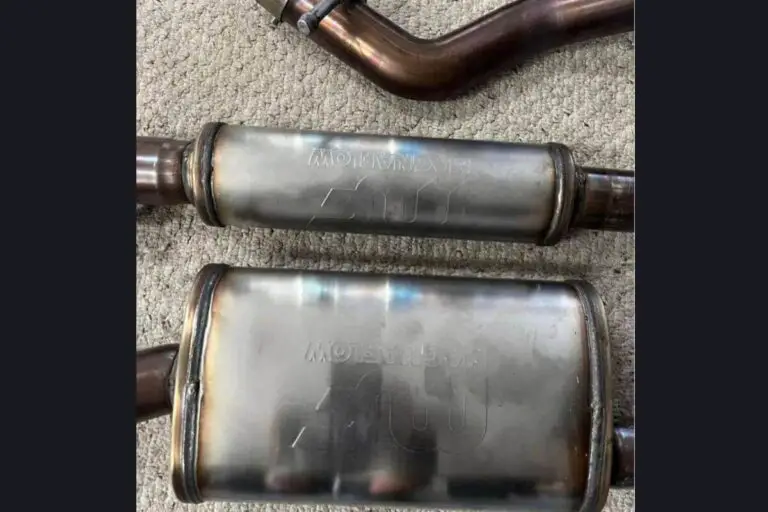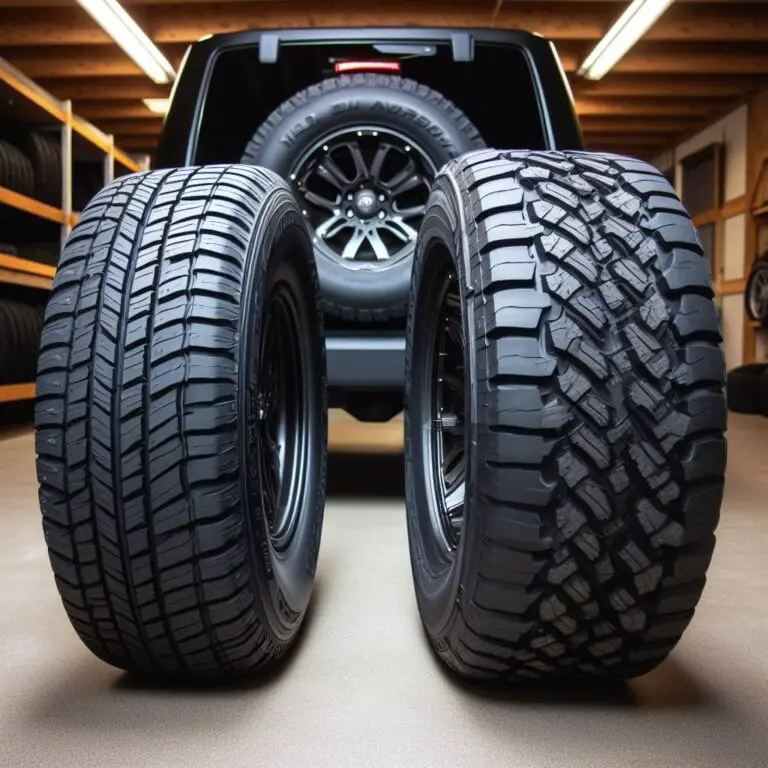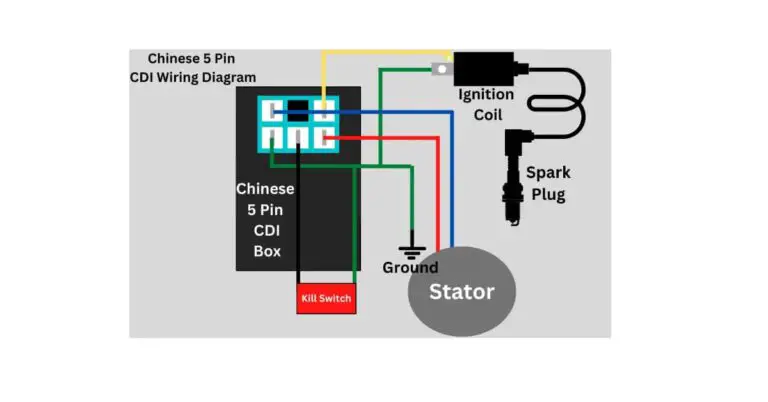Chevy Truck Trailer Wiring Color Code Explained

Trying to hook up a trailer to your Chevy truck but can’t seem to figure out the wiring? We’ve all been there. Between 4, 5, and 7 pin connectors, it can get confusing which wire goes where. But don’t fret – this guide will walk you through the complete trailer wiring color code for Chevrolet and GMC pickup trucks.
Whether you drive a Silverado, Sierra, Colorado, Canyon, S10 or other Chevy truck model, we’ll help you get your trailer lights working in no time. Below we’ll cover:
- The purpose of each wire color in 4, 5, and 7 pin trailer wiring
- Wiring diagrams with color codes for all connectors
- Trailer wiring specifics by truck year and model
- How to find the correct wiring harness for your Chevy
- Frequently asked questions about trailer wiring
Let’s start with a quick overview of Chevy truck trailer wiring and connectors.
Table of Contents
A Brief History of Chevy Truck Trailer Wiring
Chevrolet first introduced trailer wiring on their trucks back in the 1960s, with a basic 4 pin wiring harness to power trailer lights. This included wires for left/right turn signals, brake lights, and taillights.
Over the years additional wiring and connectors were added to enable more trailer functionality. In the 1980s a 5 pin harness became standard, adding a wire for electric trailer brakes. In the 1990s Chevy began using a 7 pin harness to enable even more advanced features.
The 4 pin wiring system is still used today for basic trailer light functions. The 5 pin is common on many modern trucks for trailer brakes. And the 7 pin is usually used for larger trailers that need auxiliary power and reverse lights.
Below we’ll break down the purpose of each wire color and pinout:
4 Pin Trailer Wiring:
- Yellow: Left Turn Signal / Brake Light
- Brown: Taillights / Running Lights
- Green: Right Turn Signal / Brake Light
- White: Ground
5 Pin Trailer Wiring:
- Yellow: Left Turn Signal / Brake Light
- Brown: Taillights / Running Lights
- Green: Right Turn Signal / Brake Light
- Red: Electric Trailer Brakes
- White: Ground
7 Pin Trailer Wiring:
- Yellow: Left Turn Signal / Brake Light
- Brown: Taillights / Running Lights
- Green: Right Turn Signal / Brake Light
- Red: Electric Trailer Brakes
- Blue: Auxiliary Power
- Black: Backup Lights
- White: Ground
Now let’s look at the wiring diagrams and color codes for each connector in more detail.
4-Pin Trailer Wiring Color Code Explained
The 4-pin trailer wiring harness is used for basic trailer lighting on many light duty trailers such as utility trailers, boat trailers, snowmobile trailers, etc.
Here is a wiring diagram showing the color code and pinout:
[Insert 4 pin wiring diagram image]
- Yellow Wire (Pin 1): Provides power for the left hand turn signal and brake lights on the trailer. This wire will connect to the left turn/stop light circuit on the trailer.
- Brown Wire (Pin 2): Provides power for the taillights, side marker lights, and running lights on the trailer. This wire connects to the corresponding lights on the trailer.
- Green Wire (Pin 3): Provides power for the right hand turn signal and brake lights on the trailer. This wire will connect to the right turn/stop light circuit on the trailer.
- White Wire (Pin 4): Provides a ground connection for the lighting circuits. This wire connects to the grounding wire on the trailer, completing the circuit.
With this basic 4 pin wiring, you can power all of the lighting on a small trailer. But for electric brakes or other functions, you’ll need to upgrade to a 5 pin or 7 pin harness.
5 Pin Trailer Wiring Diagram
The 5 pin trailer wiring harness adds an extra wire over the 4 pin to power electric trailer brakes. This is useful for heavier duty trailers.
Here is a wiring diagram showing the 5 pin color code:
[Insert 5 pin wiring diagram image]
The 5 pin harness contains the same Yellow, Brown, Green, and White wires as the 4 pin to power trailer lights. But it also adds:
Red Wire (Pin 5): Provides power to electric trailer brakes from the truck’s brake controller. This wire connects to the brake magnets on the trailer’s braking system.
The red wire must only be connected if you are using electric trailer brakes. It should not be powered for surge hydraulic brakes. Consult your trailer manual for compatibility.
Now let’s move on to the most advanced option – the 7 pin trailer wiring harness.
7 Pin Trailer Wiring Color Code
The 7 pin harness provides the maximum amount of connectivity between a Chevy truck and trailer. In addition to trailer lights and electric brakes, it can also power auxiliary functions.
Here is a wiring diagram of the 7 pin harness:
[Insert 7 pin wiring diagram image]
The 7 pin harness contains the same wires as the 4 and 5 pin harnesses to power trailer lights and electric brakes:
- Yellow: Left Turn / Brakes
- Brown: Running Lights
- Green: Right Turn / Brakes
- Red: Electric Brakes
- White: Ground
But it adds these additional wires:
- Blue Wire (Pin 6): Provides auxiliary power from the truck’s battery to the trailer. This can power accessories like charging outlets, dump bed motors, air conditioning, or refrigerators. Consult your trailer manual for amperage requirements.
- Black Wire (Pin 7): Powers the trailer’s backup lights. These lights will illuminate when the truck is shifted into reverse.
With this 7 pin harness you can utilize the full functionality of a large trailer while getting all lighting and power directly from your Chevy truck.
Next let’s look at the specific trailer wiring for different Chevy truck years and models.
Trailer Wiring for 1960s-1970s Chevy Trucks
In the 1960s and 1970s, 4 pin trailer wiring was standard on most Chevy trucks for basic trailer lights. Here are some notes about wiring in this era:
- A basic 4 pin harness was used to power trailer tail lights, turn signals, and brake lights
- 4 pin harness was included with Chevy trucks and GMC pickups of all sizes
- Wiring was routed under the truck, with the harness exiting behind the bumper
- Typical connector was a flat 4 pin housed in a bracket behind the bumper
- Some models had a round 4 pin connector instead
Popular Chevy truck models of this era that had 4 pin wiring installed from the factory include:
- C/K 10, 20, 30
- GMC 100, 200, 300
- Chevy LUV compact pickup
- Blazer / Jimmy SUVs
Chevy also offered an optional heavy duty trailer wiring package during this time which upgraded the harness with higher gauge wires and provided a 7 pin round connector.
Overall the 4 pin round and flat connectors were the standard installment on 60s/70s Chevy trucks for trailer lights.
Trailer Wiring for 1980s-1990s Chevy Trucks
In the 80s and 90s, Chevy expanded trailer wiring with both 4 pin and 5 pin harnesses available:
- 4 pin remained standard for basic trailer lighting needs
- 5 pin wiring became available for heavier duty trailers with electric brakes
- Connectors evolved from rounds pins to flat pins
- Wiring was still routed underneath the truck, exiting behind the bumper
- GM now offered standard trailer packages for specific models
Here are some popular 80s-90s Chevy trucks and the typical factory trailer wiring:
- C/K 1500, 2500, 3500: 4 or 5 pin flat harness
- S10: 4 pin round harness
- Blazer: 4 pin round harness
- Suburban: 5 pin flat harness
- Tahoe: 4 pin round or 5 pin flat harness
The trailer wiring was integrated into Chevy’s electrical system, so connecting a trailer harness plugged directly into the truck’s wiring. Adapters were available to convert between round and flat pins.
Trailer Wiring for 2000s Chevy Trucks
In the 2000s, the 4 pin harness remained standard on light duty trucks, while 5 pin and 7 pin harnesses became available for heavy duty towing:
- 1500, 2500 trucks got a 4 flat pin harness standard
- 2500HD, 3500 trucks got a 7 pin round harness standard
- Optional 5 pin flat harness available across lineup
- SUVs like Tahoe, Suburban had a 4 pin round or 5 pin flat
- S10 still used a 4 pin round connector
- Parts now available to easily convert between 4, 5, and 7 pin wiring
- Connectors changed to be splayed flat pins instead of rounded pins
Some popular 2000s Chevy truck models and wiring:
- Silverado 1500: 4 pin flat harness
- Silverado 2500HD: 7 pin round harness
- Colorado: 4 pin round harness
- Tahoe: 4 pin flat harness
- Avalanche: 5 pin flat harness
Chevy also introduced the Tow/Haul mode in 2000s trucks, which optimized transmission shifting for trailer towing.
Trailer Wiring for 2010s Chevy Trucks
In recent model years, Chevy has continued expanding the trailer wiring:
- 4 pin flat: Light duty trucks under 8,500 lbs. towing
- 5 pin flat: Some light duty trucks and SUVs
- 7 pin flat: Heavy duty trucks over 8,500 lbs. towing
- Additional options like 4/7 pin adapters available
- Parts available to easily adapt between 4, 5, and 7 pin wiring
- Tow/Haul mode included on all trucks to improve hauling performance
- Rear view cameras and trailering assist systems introduced to aid with trailer hookups
Here are the typical wiring harnesses by model:
- Colorado: 4 pin flat harness
- Silverado 1500: 4 pin flat standard, can upgrade to 5 pin or 7 pin
- Silverado 2500HD: 7 pin flat standard
- Silverado 3500HD: 7 pin flat standard
- Tahoe: 4 pin flat standard, can upgrade to 7 pin
- Suburban: 4 pin flat or 7 pin flat available
This covers the basics of Chevy trailer wiring for each era. Next let’s go over finding the correct harness for your truck.
Finding the Right Trailer Wiring Harness
The easiest way to get the proper Chevy trailer wiring harness is to simply use the factory harness that came with your truck. Trailer connectors are usually located at the rear bumper.
If your truck’s OEM harness is missing, damaged, or you need to upgrade, you’ll need to get the specific harness for that make/model/year. Here are some tips:
- Use your VIN number to check the correct parts for your truck’s specs
- For older trucks, look for the trailer package option code on your door sticker
- For newer trucks, inventory the pins in your existing harness to match
When buying a replacement harness, be sure to get the proper:
- Connector style (4 flat, 5 flat, 7 round, etc)
- Pin style (rounded pins, flat pins, splayed pins)
- Length to comfortably route under your truck
Make sure the harness is designed to integrate with your truck’s electrical system, rather than just splicing into the wiring.
Some good brands that make replacement Chevy harnesses are Draw-Tite, Curt, Hopkins, and Reese. You can find these at most auto parts stores or order exact fit kits online.
Installing the new harness involves running the wiring from the truck cab to the rear frame, securing with mounting brackets, and plugging into the truck’s factory connector. Make sure to use heat, abrasion, and moisture resistant wiring.
Summary of Chevy Truck Trailer Wiring
Hopefully this guide has helped demystify trailer wiring for your Chevy truck. To recap, the key points are:
- Use the 4 pin harness for basic trailer lighting with turn, brake, tail, and ground wires
- Use the 5 pin for trailer lighting plus electric brakes on medium duty trailers
- Use the 7 pin for maximum connectivity with auxiliary power and backup lights
- Chevy trucks use flat 4, 5, and 7 pin connectors on most newer models
- Adapters allow you to easily convert between different connectors
- Always check your VIN and truck docs to get the right harness for your model
- Improper wiring can cause shorts, so use a purpose-built trailer harness
- Take your time routing and securing the wiring to protect from damage
- Test all lights and electric brakes before hitting the road
With the right harness installed, you’ll have reliable trailer lighting and power. Please drop a comment below if you have any additional trailer wiring questions!
Frequently Asked Questions about Chevy Truck Trailer Wiring
Let’s review some common questions about wiring trailers on Chevy trucks:
What is the easiest way to convert between different trailer wiring connectors?
Using an adapter is the simplest option. Adapters allow you to convert from 4 pin to 5 pin, 5 pin to 7 pin, etc. Make sure the adapter matches your truck’s wiring harness – some adapters are for the trailer side.
Where is the trailer brake controller located?
Chevy brake controllers are usually mounted under the dash on the driver’s side for easy access. Consult your owner’s manual for the exact location.
My truck has a 4 pin harness but my trailer has no lights – why?
Check that the white ground wire is securely attached on both the truck and trailer side. Also check for damage in the harness wires. Test with a circuit tester.
How do I know if my trailer is equipped with electric or surge brakes?
Electric brakes will have a braking mechanism with magnets and wiring. Surge brakes use a hydraulic cylinder inside the brake actuating lever. Consult your trailer manual.
My trailer lights work but the electric brakes are not activating – what should I check?
Verify the trailer brake controller is installed and functioning properly. Make sure the brake controller is properly calibrated. Check the connections on the red brake wire.
Can I splice into my truck’s wiring to add a trailer harness?
No. Always use a dedicated trailer wiring harness that integrates with your truck’s electrical system. Splicing can cause shorts and electrical problems.
My truck has a 7 pin harness but my trailer only needs 5 pins – what do I do?
You can use a 7 pin to 5 pin adapter. Or you may be able to remove the last 2 unused pins from the truck’s 7 pin harness. Just be sure to verify 5 pins is all your trailer needs.
How do I know if my truck’s factory harness is adequate or I need to upgrade?
Check your owner’s manual for the trailer weight ratings and required equipment. Go with a heavier duty harness if you need electric brakes or auxiliary power for a large trailer.







